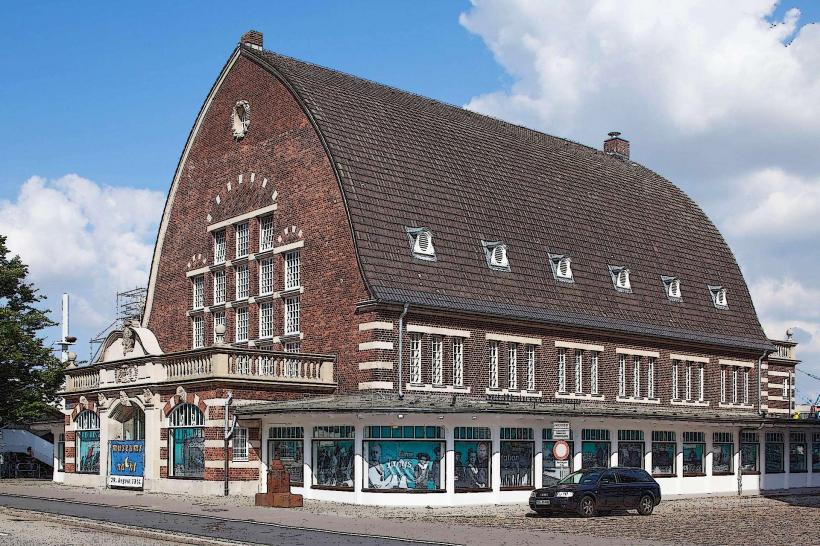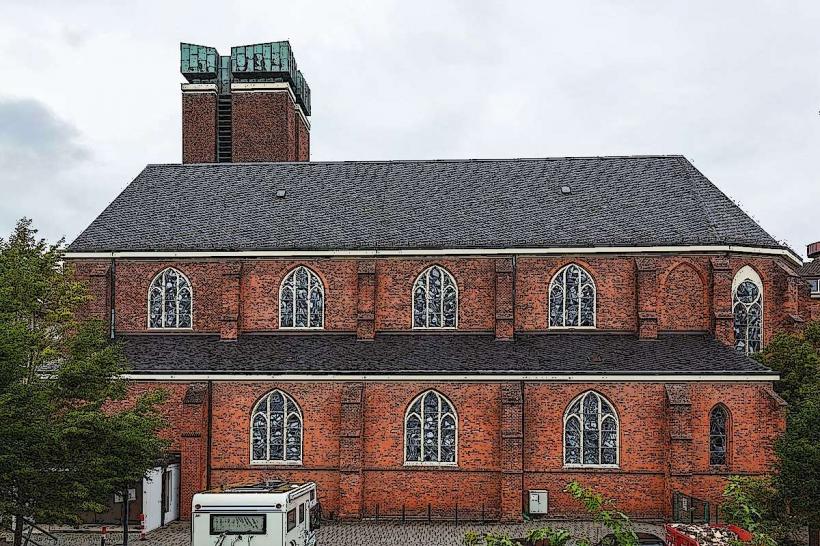Information
Landmark: Kiel CanalCity: Kiel
Country: Germany
Continent: Europe
The Kiel Canal (Nord-Ostsee-Kanal or NOK in German) is a major engineering marvel and one of the busiest artificial waterways globally, linking the North Sea with the Baltic Sea. It’s located in northern Germany, extending 98 kilometers (61 miles) from Brunsbüttel, near the Elbe River estuary on the North Sea, to the port city of Kiel on the Baltic Sea. The canal bypasses the Jutland Peninsula, allowing vessels to save about 250 nautical miles (460 kilometers) by avoiding the circuitous and sometimes hazardous route around Denmark.
History of the Kiel Canal
Initial Construction:
- Motivation: In the late 19th century, Germany sought a way to facilitate quick naval and commercial movement between the North and Baltic Seas. During this period, Germany had an expanding naval presence, and the canal was also seen as a way to strategically reinforce naval mobility, particularly for the German Imperial Navy.
- Building Phase: Construction began in 1887 under the order of Kaiser Wilhelm I. Engineers and workers faced substantial technical challenges, including water management and maintaining stable banks, which led to innovations in canal construction. By 1895, the project was completed, and the canal officially opened, initially named the Kaiser-Wilhelm-Kanal in honor of the emperor.
Expansion (1907–1914):
- As ships grew in size, the original canal quickly became insufficient to handle the volume and scale of traffic. Under Kaiser Wilhelm II, a major expansion project was initiated to widen the canal to 103 meters (338 feet) and increase its depth to around 11 meters (36 feet). This expansion allowed the canal to handle larger ships, contributing to its role as a critical maritime route.
- The widened canal was completed in 1914, just as World War I was beginning, which further emphasized its strategic military significance.
Post-World War Changes and Modernization:
- Following both World Wars, the canal remained important for commercial shipping and saw additional enhancements. In 1936, the Kaiser-Wilhelm-Kanal was officially renamed the Kiel Canal.
- In modern times, further upgrades have been carried out, such as deepening and updating lock systems to accommodate larger, heavier vessels. These improvements have ensured the canal remains competitive with other global maritime routes.
Structure and Design
The Kiel Canal is notable for its large lock systems, which manage water levels and control traffic flow.
Locks at Both Ends: The canal has lock systems at each terminus—one in Brunsbüttel on the North Sea and another in Kiel on the Baltic Sea. Since the North Sea and Baltic Sea have slightly different water levels and tidal variations, the locks stabilize conditions, allowing for smooth passage. The Brunsbüttel locks are among the largest in Europe and were expanded in recent decades to include additional chambers, enabling multiple vessels to pass simultaneously.
Bridges and Tunnels: The canal is crossed by several high bridges that allow both rail and road traffic to pass without interfering with ship traffic. Among these, the Rendsburg High Bridge stands out as an engineering and architectural highlight. This railway bridge includes a unique spiral loop structure to accommodate elevation changes, making it a favorite for photographers and engineering enthusiasts.
- In addition to bridges, several tunnels run beneath the canal, providing safe and uninterrupted road and pedestrian access.
Pilotage System: Ships passing through the canal require guidance by experienced canal pilots who board vessels at each end. These pilots help navigate the narrow and winding route, which can be challenging for larger ships.
Canal Traffic and Restrictions
The Kiel Canal is one of the busiest artificial waterways in the world, averaging around 30,000 transits annually, which includes commercial freighters, container ships, oil tankers, and even cruise liners.
Size Restrictions: While the canal can accommodate large vessels, it has maximum size restrictions—currently, ships up to 235.5 meters (772 feet) in length and 32.5 meters (107 feet) in width are permitted. This limitation means some very large ocean-going vessels, especially modern cargo ships and supertankers, must still navigate the longer route around Denmark.
Environmental and Economic Benefits: The canal not only reduces the travel time and fuel costs for ships but also helps reduce emissions by shortening the journey. Consequently, it supports sustainability efforts in the maritime industry.
Tourism and Scenic Attractions
The Kiel Canal is not only an important trade route but also a scenic and recreational attraction in northern Germany:
Cycling and Walking Paths: Dedicated cycling and walking paths line much of the canal, attracting outdoor enthusiasts who enjoy watching the steady flow of ships. The Kiel Canal Trail allows for leisurely exploration of the canal's scenic surroundings, villages, and landscapes.
Viewing Points and Locks: The locks at Brunsbüttel and Kiel are popular tourist sites where visitors can observe ships maneuvering into the canal. Viewing platforms provide close-up experiences of the lock operations and the variety of vessels using the canal.
Rendsburg High Bridge: This 42-meter (138 feet) tall bridge is both a functional railway bridge and a tourist attraction. Its spiral loop track on the northern bank allows trains to descend gradually, a solution that engineering enthusiasts appreciate. Below the bridge, a unique transporter bridge, one of the last of its kind, carries pedestrians, cyclists, and even vehicles across the canal.
Canal Festivals: Several towns along the canal, including Kiel, host events and festivals celebrating the canal’s history and importance. The Kieler Woche (Kiel Week), an annual sailing event in June, attracts international visitors and highlights the maritime culture of the region.
Economic Significance
The Kiel Canal remains a critical part of Germany’s and Europe’s maritime infrastructure. As a free-to-use passageway for vessels of all nations, it facilitates trade not only within Europe but also with countries around the world. It connects some of Germany’s busiest ports, supporting both exports and imports across sectors. This strategic route also serves as a key transit point for goods moving between northern and eastern Europe.
Future Developments
Ongoing modernization efforts aim to keep the Kiel Canal relevant and efficient in handling the demands of contemporary shipping. Current projects focus on lock improvements, expanding capacity, and introducing smart systems to manage traffic more effectively.
Quick Facts:
- Length: 98 km (61 miles)
- Width: Approximately 103 meters (338 feet) at the expanded sections
- Depth: Around 11 meters (36 feet)
- Maximum Ship Size: 235.5 meters (length) and 32.5 meters (width)
The Kiel Canal remains a marvel of engineering, contributing to maritime commerce while offering scenic beauty and a historical journey for visitors.




